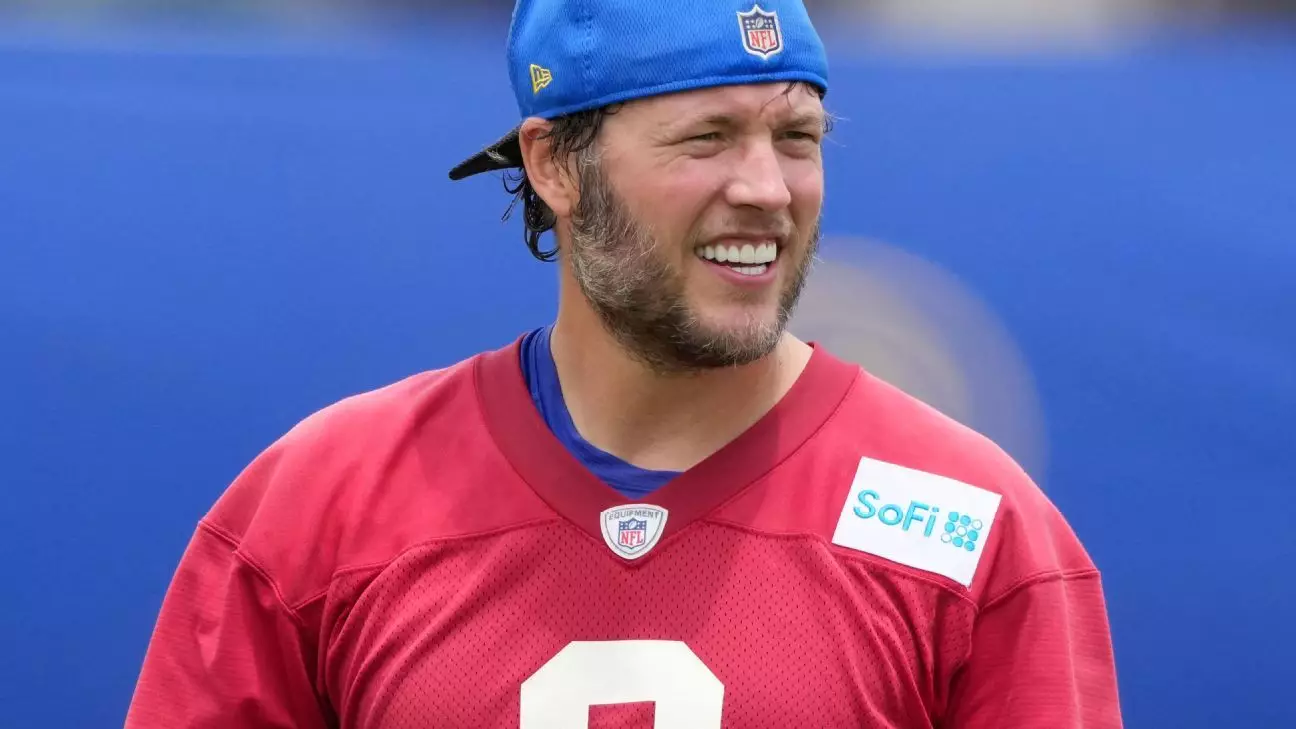In the high-stakes world of professional football, player health is often a delicate balancing act. The Los Angeles Rams face a critical crossroads with quarterback Matthew Stafford, whose persistent back soreness poses a challenge to the team’s ambitions for the upcoming season. While initial reports suggested Stafford would join full practice sessions early in training camp, recent updates point to a more cautious approach. This shift underscores a strategic decision rooted in prioritizing long-term health over short-term gains.
Stafford’s injury, while not deemed a setback, requires meticulous management to ensure he is fully prepared for the season opener. The Rams’ coaching staff, led by Sean McVay, emphasizes a measured progression rather than rushing the veteran quarterback back onto the field. Such prudence demonstrates a clear understanding that a compromised or reinjured Stafford could jeopardize the team’s offensive stability. The choice to keep him on a modified schedule reflects a broader trend in NFL strategy—protecting core players from exacerbating injuries that could diminish their effectiveness over the course of the season.
A key element of this approach is the recognition that rushing Stafford back to practice without ensuring his complete recovery could be counterproductive. The Rams are preemptively guarding against setbacks by monitoring his condition and adjusting his workload accordingly. This is not simply an insurance policy but a testament to their strategic awareness: safeguarding their star quarterback now could translate into better performance and durability when it truly matters, especially during the tense season stretch and potential playoff run.
The Long-Term Perspective Over Short-Term Gains
Sean McVay’s comments reveal a calculated understanding of Stafford’s value—not only on the field but as the figurehead of the team’s offensive leadership. By stating that Stafford will participate in practice “a week at a time,” McVay emphasizes the importance of incremental progress. This approach, while sometimes frustrating for fans eager to see full contact and live-action drills, aligns with a philosophy that values sustainable health and peak performance over hasty returns.
While it’s reassuring that Stafford did not experience an injury setback, the decision to delay full practice participation reflects a level of humility and responsibility. Too often, teams push their star players into action prematurely, risking prolonged absences or diminished performance. The Rams seem aware of that trap and are actively resisting such pressure. They recognize that the data and physiological indicators take precedence over excitement or fan expectations.
Furthermore, McVay’s optimistic outlook on Stafford’s readiness for the season’s first game should be tempered by the understanding that patience now can prevent a more substantial setback later. The Rams are betting on the long game, understanding that a healthy Stafford leading the offense will be far more valuable than a hurried comeback risking injury. This long-term perspective not only benefits Stafford’s career longevity but also sets a precedent for team management that values player well-being.
The Implications for the Rams’ Offensive Outlook
The Rams’ strategy to keep Stafford away from full contact in training camp might raise eyebrows among fans eager to see a fully functioning offense, but it could prove beneficial. It allows other offensive players to develop chemistry, adapt to game situations, and integrate into game plans without over-reliance on the quarterback’s physical state. It’s a calculated wait, designed to ensure Stafford’s arm and body are primed for the demands of a gritty NFL season.
Last season, Stafford showcased his skill with impressive numbers—over 3,700 yards passing and twenty touchdowns. However, his absence in the finale and concerns over durability cast a shadow over his potential. The Rams appear determined to capitalize on his passing prowess while minimizing risks. Their approach reflects an understanding that a quarterback’s effectiveness depends on physical resilience, especially as the season progresses into colder months and heightened wear and tear.
Overall, the Rams’ handling of Stafford’s injury highlights a broader shift in NFL team management—where player health is strategic capital, and patience can be a decisive factor. While it may test fans’ patience in the short term, the team’s disciplined approach aims to ensure that Matthew Stafford, and by extension the Rams, stay resilient and competitive throughout the grueling NFL schedule.


Leave a Reply